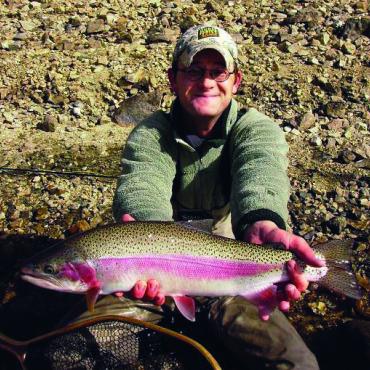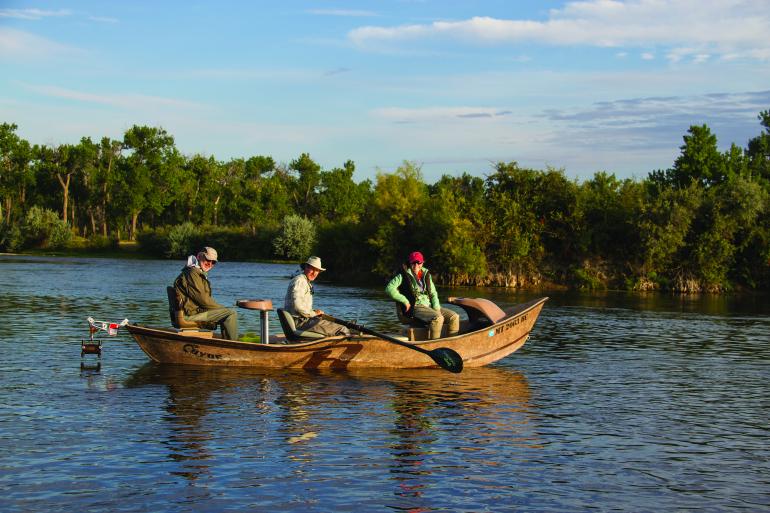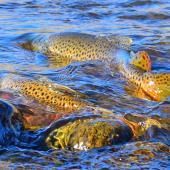Which Way Do You Row?
As an outfitter and professional fishing guide, I’ve owned a handful of river craft over the years. Since the majority of my floating occurs with paying sports, I’ve always chosen hard-sided driftboats, as they tend to be a bit more comfortable to fish from, and the rigid structure allows anglers to easily cast while standing.
Rafts, especially modern, higher-quality models, can perform most of the same functions that a hard-sided boat does, and they’re much better in shallow conditions and can handle whitewater that would easily swamp a traditional driftboat. In a perfect world, I would own one of each.
Unfortunately we don’t live in a perfect world, and my profession binds me to my driftboat. I’ll continue to wish for a raft during shallow flows of the late summer or on the off-chance I draw a Smith River permit.
If you happen to be in the market for a boat or a raft, consider the water you plan on floating. Then consider the following lists:
Driftboat Pros
- Most driftboat models are extremely easy to row and maneuver.
- Driftboats tend to track more surely, and with a little rowing practice, holding optimum position in the current takes little effort.
- Depending on the height of the sides, driftboats can be less affected by wind, making maneuvering easier on gusty days.
- Most driftboat models come equipped with at least one dry-storage area; many have them under the seats and along the gunnels.
- Most driftboats come complete with anchoring systems, which makes stopping, launching, and loading easier.
- Driftboats are usually designed specifically for fishing, so there are minimal places for fly line to hang up when casting.
- Standing and storing gear in a driftboat is easier due to the relatively flat and rigid floor.
- Driftboats are much easier to mount a small motor on, which makes them great for fishing small lakes and ponds.
Driftboat Cons
- Driftboats require a trailer, which will have to be towed. Trailers require registration and licensing.
- Fiberglass can chip or crack, and aluminum can dent or ding.
- Wood boats can require a lot of TLC and may need to be waxed or varnished regularly.
- Driftboats can sink if they are swamped.
Raft Pros
- Rafts can go anywhere hard-sided boats can go, and lots of places they can’t.
- Rafts can be rolled up and loaded into or on top of a vehicle; if you’re willing to put up with the hassle, no trailer is required.
- Because of the aforementioned feature, rafts are much easier to store securely during the off-season.
- Many raft companies offer a variety of fishing-specific frames; some even have flooring options, leg locks, and integrated anchor systems.
- Rafts are safer in rough water and can be used for “splash-and-giggle” floats when the fishing isn’t good.
Raft Cons
- Even the most fishing-specific raft frame will need to be equipped with dry boxes or bags to keep gear dry.
- High winds can render a raft sluggish, and in slow-flowing rivers, downstream progress may require some rowing.
- Rafts don’t track quite as well as drift boats, so a little more rowing may be necessary to hold a position in the river.
- Frame parts and tie-down straps will inevitably snag fly lines.
- Getting into or out of a raft can be cumbersome, which for those with limited mobility may be an issue.
In conclusion, there is no such thing as the perfect river craft. The main determining factor in choosing either option is the type of river you want to fish and what time of year you want to fish them. Be forewarned: once either boat is obtained, you may suddenly have more friends than you thought you had, and they’ll all want to go floating.
Kurt Dehmer owns Durty Kurty’s guide service in Bozeman.












